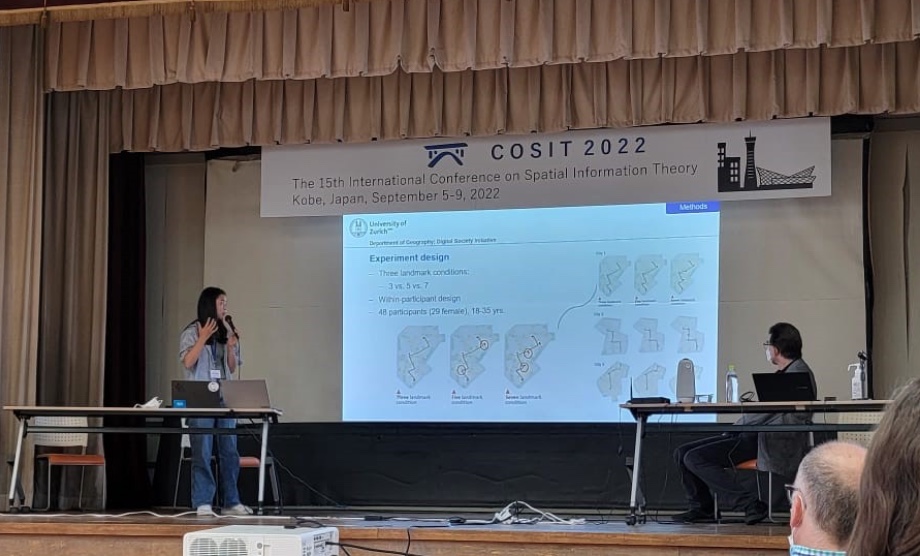COSIT 2022
Eye Blink-Related Brain Potentials During Landmark-Based Navigation in Virtual Reality
Bingjie Cheng presented the research work on eye blink-related brain potentials during landmark-based navigation in virtual reality at the COSIT 2022 in Kobe.

Eye Blink-Related Brain Potentials During Landmark-Based Navigation in Virtual Reality Bingjie Cheng, Enru Lin, Klaus Gramann, Anna Wunderlich
Abstract
Landmarks support navigation and spatial learning of environments by serving as cognitive anchors. However, little research has been done to investigate how the design of landmarks on mobile maps affects cognitive processing. To address this gap, the present study utilized a within-subjects design to experimentally examine how three different landmark densities (3 vs. 5 vs. 7 landmarks) on mobile maps influence users' spatial learning and cognitive load during navigation. Cognitive load was measured using electroencephalography (EEG). We applied an event-related analysis approach by utilizing eye blinks as naturalistic event markers to segment the EEG data. Results demonstrate that showing five landmarks along a given route to follow on a mobile map, compared to three and seven landmarks, improved spatial learning performance without taxing more cognitive resources. Our study shows that users' cognitive load and spatial learning outcomes should be considered when designing landmark-based navigation assistance systems.
https://drops.dagstuhl.de/opus/frontdoor.php?source_opus=16913